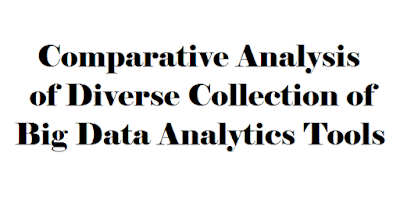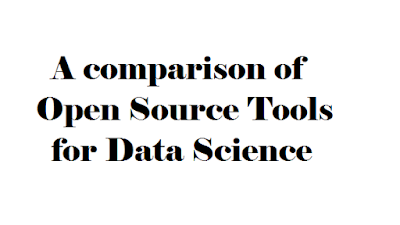Comparative Analysis of Diverse Collection of Big Data Analytics Tools
Over the past era, there have been a lot of efforts and studies are carried out in growing proficient tools for performing various tasks in big data. Recently big data have gotten a lot of publicity for their good reasons. Due to the large and complex collection of datasets it is difficult to process on traditional data processing applications. This concern turns to be further mandatory for producing various tools in big data. Moreover, the main aim of big data analytics is to utilize the advanced analytic techniques besides very huge, different datasets which contain diverse sizes from terabytes to zettabytes and diverse types such as structured or unstructured and batch or streaming. Big data is useful for data sets where their size or type is away from the capability of traditional relational databases for capturing, managing and processing the data with low-latency. Thus the out coming challenges tend to the occurrence of powerful big data tools. In this survey, a various collection of big data tools are illustrated and also compared with the salient features.
IG data is avast quantity of data which extracts values by the process of capturing and analysis, this can be possible by innovative architectures and technologies. Nowadays from the platform of traffic management and tracking personal devices such as Mobile phones are useful for position specific data which emerges as novel bases of big data. Mainly the Big data have developed to increase the use of data demanding technologies for it. By using prevailing traditional techniques it is very challenging to achieve effective analysis of the huge size of data. Meanwhile, on the market, big data have become the latest imminent technology, which can serve vast profits to the business organizations.
This becomes essential because it contains several issues and challenges related in bringing and adapting, which need to be understood in this technology. The concept of big data deals with the datasets which continues to develop rapidly whereas that becomes tough to handle them by using the current concepts and tools in database management. Data capture, sharing, analytics, search, storage, visualization, etc., is the related difficulties in big data. Many challenges can be forwarded due to the several properties of big data like variety, velocity, variability, volume, value and complexity. Scalability, real-time analytics, unstructured data, fault tolerance, etc., is the several challenges included in huge data management.
Obviously the amount of data stored in various sectors can vary in the data stored and created, i.e., images, audio, text information etc., from one industry to another. From the practical perspective, the graphical interface used in the big data analytics tools leads to be more efficient, faster and better decisions which are massively preferred by analysts, business users and researchers.




